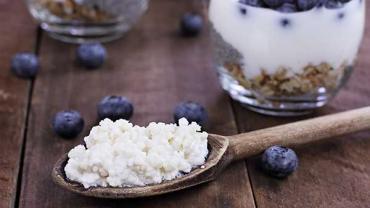
Rosacea is an inflammatory skin disease with an elusive pathology that is thought to include a combination of microorganisms, genetic predisposition, abnormal neurological signaling, a disrupted innate immune system, and dysbiosis. The clinical presentations can differ slightly between individuals and help classify rosacea into one of four subtypes: erythematotelangiectatic, papulopustular, phymatous, and ocular.
Traditional therapy has focused on anti-inflammatory antibiotics, but long-term pharmaceutical therapy is rarely a desirable option due to the risk of gastrointestinal distress and antibiotic resistance. It is also well known that there are specific triggers that exacerbate rosacea including heat, sun exposure, spicy foods, alcohol consumption, exercise, and heightened emotions. Given the fact that none of these are modulated by antibiotics, questions are raised regarding other treatment modalities that may more effectively address the underlying causes of rosacea. Diet is increasingly becoming the focus as we learn more about the gut-skin axis and its influence upon many of the elements of rosacea including the microbial, inflammatory, and immune components.
Diet is unquestioningly becoming an aspect of managing all subtypes of rosacea. According to a survey by the National Rosacea Society, 78 percent of the 400+ patients surveyed had altered their diet due to rosacea; and of this group, 95 percent reported a reduction in flares. Of the dietary triggers reported in this survey, most fell into 4 groups: heat-related (hot coffee, tea), alcohol-related (wine, hard liquor), capsaicin-related (spices, pepper, hot sauces), and cinnamaldehyde-related (tomatoes, citrus, cinnamon, chocolate). One explanation for the triggering effects of these foods is their ability to stimulate vanilloid channels which are active in patients with rosacea. When these channels are activated, they increase blood flow to the skin via neurogenic vasodilatation, which causes the flushing and burning associated with this condition.
In a multicenter retrospective case-control survey of 2637 subjects (controls and patients with rosacea) that sought to find a relationship between diet and rosacea, a high-frequency intake of fatty food and tea was associated with rosacea, while a high-frequency of dairy products negatively correlated with it (and may have actually been linked to a reduction in rosacea severity).
The gut-skin axis is another explanation for the link between diet and rosacea. Anecdotally, many patients with rosacea also experience gastrointestinal conditions. A population-based cohort study of nearly 50,000 Danish patients with rosacea discovered a high prevalence of celiac disease, Crohn’s disease, ulcerative colitis, Helicobacter pylori infection, small intestinal bacterial overgrowth (SIBO), and irritable bowel syndrome. Research has already confirmed a direct link between the microbiome of the gut and the robustness of the immune system. Additionally, since the body’s inflammatory response is a role of the immune system, these cannot be treated separately. Therefore, it should be no surprise that rosacea – a condition with immunological and inflammatory-based pathology – is also associated with gastrointestinal conditions that are rooted in an unhealthy microbiome. This association is further strengthened by the fact that antibiotics often lead to short-term improvement but are not a long-term solution. Initially, antibiotics eradicate the pathogenic organisms from the gut, but without adequate probiotic and dietary support to rebuild a healthy microbiome, the positive effect of the antibiotics diminishes and eventually has an opposing effect on the gut.
The microbiome of the gut has also been shown to influence the microbial composition of the skin, which may affect the bacterial component of rosacea. Further, the skin microbiome modulates the immune response at the surface of the skin. Since the pathology of rosacea involves a dysregulated innate immune response, including enhanced expression of toll-like receptor 2 in the epidermis of rosacea patients, correcting the gut microbiome may be a foundational process for rebalancing the microorganisms and immune response of the skin.
Dietary patterns that support a balanced microbiome include 1) fermented, probiotic-rich foods such as yogurt, kefir, miso, kimchi, and sauerkraut; 2) dietary plant fiber to serve as prebiotics; and 3) cold-water fish and seafood, and/or omega-3 fatty acid supplements as substrates for anti-inflammatory prostaglandins that competitively inhibit pro-inflammatory pathways. Low-carb, high-protein diets, such as a Paleolithic diet, have been shown to positively modulate the microbiome since they eliminate sugar sources that foster the growth of pathogenic bacteria while providing nutrients that modulate the inflammatory response and promote a favorable environment for beneficial organisms.
Individuals suffering from rosacea often groan as the summer months progress since the heat and sun often exacerbate the flare-ups; however, rosacea is far less of a seasonal problem and more of a year-round gastrointestinal problem, meaning its management needs to begin with a closer look at the diet.